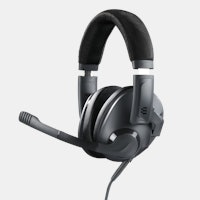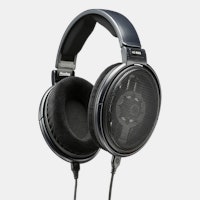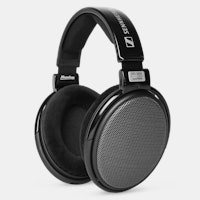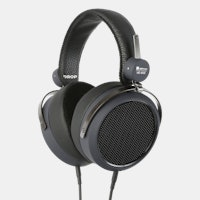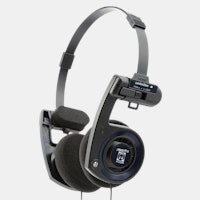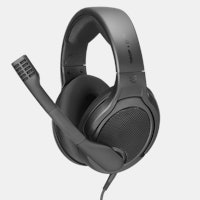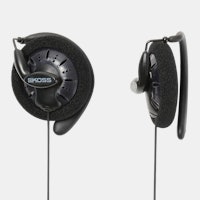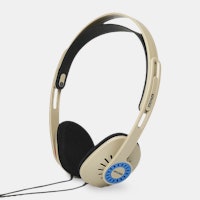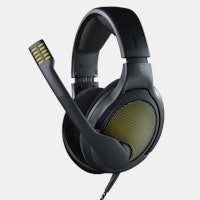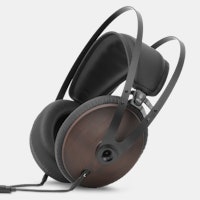Click to view our Accessibility Statement or contact us with accessibility-related questions









Introducing the Drop + EPOS H3X
Building on our success with the Drop + EPOS PC38X, we decided to develop a closed-back, entry-level headset to broaden our offering. Doing our due diligence in the current market, we found that most headsets under $100 focus on virtual surround sound, which often distorts soundstage and frequency response. Many of these headsets also suffer from poor audio quality overall—especially for anything other than games—as well as subpar microphone performance. When we started development on our under-$100 headset, we knew we had to find the right partner to provide a listening experience similar to the PC38X, which works great for gaming, and a wide range of other listening uses.


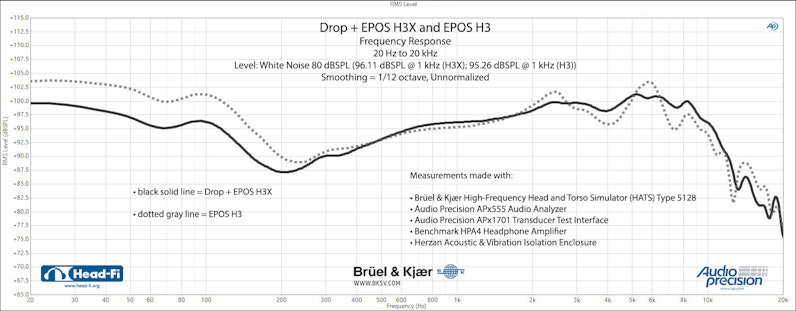
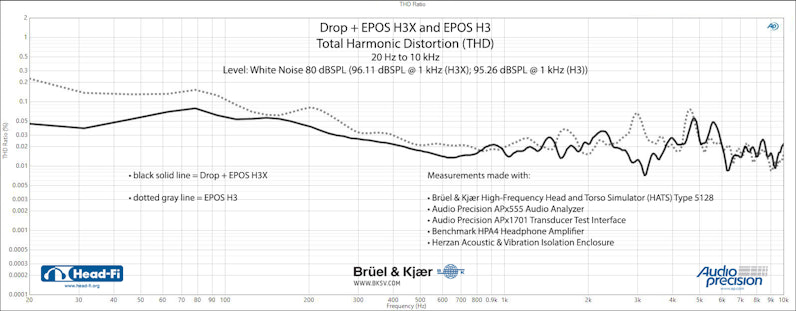





search
close
Sort by: Newest
keyboard_arrow_down
Evshrug
4130
Keyboard Club Member
Oct 23, 2022
The extra details in this write-up are welcome. Demant/EPOS tune their products to my liking: I preferred the PC37X over the more expensive Sennheiser HD 599 (which offered an IMO overly polite sound: a bit dark, with softer attack and decay hurting the ability to project soundstage depth), and the PC38X was only more capable.
I like the inclusion of the indicator on the cable… the number 1 support question I saw people ask was related to not plugging in the cable all the way. Good thinking! I haven’t personally done extended testing on the EPOS branded GSP headsets’ volume dials, but they look a little different than the ones that would cause channel imbalance sometimes on the Game One style headsets (which therefore I never touch once it’s balanced at near max volume), and hopefully they are more durable.
Time will tell when it comes to the headband. I liked the PC37X and PC38X headbands, but I preferred the apex divot which prevented hotspots in long wearing sessions with the PC38X and Sennheiser’s HD 560S, HD 6XX, and more. If this is at least as comfortable as the PC37X, it still will be pretty comfortable for most. Speaking of pretty, I assume that’s why artificial (vegan friendly?) leather and padding on the outside arc of the headband is used… it won’t do anything functionally (well… maybe reduce ringing resonance from coming from the headband?), but it looks plush and probably doesn’t scuff easily, and the steel adjustment extensions look good too.
I would ask how long the cable is? And what is it wrapped in? I presume it will be similar to the PC38X’s “short” headset cable rather than the extra long PC cable with separate mic and audio plugs. Hopefully it’s not microphonic when the cable rubs shirt or couch fabric.
I am actually a fan of spatial audio DSPs, I believe surround sound and 3D audio in games is just as important as polygons to an immersive gaming experience. That said, I’m OK with its lack of inclusion here. Headphone surround gets a bad rep for not providing convincing soundstage depth and just sounding like distorted frequency response… that’s because cheap surround/spatial DSPs suck. They are designed as “one size fits all,” about 70% of the population will get a mild sense of direction (and 30% will just not have it work at all), and if they’re only fed stereo audio then they’re not even that good (those they simply apply a bit of crossfeed, a bit of reverb, and a dip in the upper mids to seem a bit distant). To actually be decent, the DSP actually has to be fed with directional data, use a real Head-Related-Transfer-Function (HRTF) to transform the sound, and the best spatial DSPs custom tailor to you. The PlayStation 5 offers all these things to some degree (5 HRTF options isn’t much, because our ears are more unique than fingerprints, but at least they’re real HRTFs and there’s more than one option), so a compatible DAC can pass that along, or something that can take a surround sound signal from HDMI can do spatial audio for headphones on its own.

Evshrug
4130
Keyboard Club Member
Jul 22, 2023
Yes, you summed up my post pretty well.
Since we are reiterating, I will re-assert that I think headphone surround DSPs have a significantly large impact to realism and immersion in games. I am OK with the decision not to have low end digital components built into the headphones themselves – like a headset with built-in USB and Dolby DSP, those have so far been merely “meh” and create a lackluster consumer impression of surround benefits/capabilities. I think the Sennheiser Binaural Engine that EPOS uses in some of their products is actually quite good, and the GSX1000 is better than those in-line USB Dolby headset options.
However, I would like it if EPOS or somebody offered a high end DSP product. EPOS’ current options are mid-grade for high efficiency headphones, they don’t offer high-end DAC/amps to really showcase the full potential of the DSP or headphones. I would not mind if EPOS released a GSX 2000, with higher end specs to cater to the Millennials and Gen X customers who have graduated from $100-$200 devices and are hungry for a step up in quality to fill the gap under the $4000+ Smyth Realiser and surpass the discontinued Creative Sound Blaster X7.
(Edited)
PRODUCTS YOU MAY LIKE
Trending Posts in Audiophile
AntonetteCBak
Tips for Setting Up a Trading Desk with a Laptop
Creating an efficient and organized trading desk with just a Best laptops for trading requires a strategic approach to maximize productivity and trading success. Whether you’re a beginner or a seasoned trader, having the right setup ensures seamless execution of trades, minimizes errors, and keeps you focused. Below are essential tips to set up a professional trading desk using a laptop. Invest in a high-performance laptop tailored to trading needs. Opt for a model with a fast processor (e.g., Intel i7 or AMD Ryzen 7), at least 16GB of RAM, and a solid-state drive (SSD) for quick data access. Ensure the laptop has multiple ports for connecting peripherals and a high-resolution display for crisp chart visibility. Trading often involves monitoring multiple charts, news feeds, and trading platforms simultaneously. Connect your laptop to external monitors using HDMI or USB-C ports to expand your workspace. Dual or triple monitor setups allow for better multitasking and a...
Nov 21, 2024

abhinavkumar
Company Information in Dubai
Get comprehensive company information in Dubai, including registration requirements, licensing options, and compliance guidelines. Whether you’re exploring free zones, mainland, or offshore setups, our expert resources provide insights to help you make informed business decisions. Navigate Dubai’s business landscape with clarity, from legal requirements to operational support for a successful establishment. For more details:- https://leelainternational.com/
Nov 21, 2024

Leafwise
Show off your carry / bag / case / setup for your Head-Fi gear ✨
As subject, what do y'all carry your gear in for out-and-about/day-to-day and then for travel, if anything other than pockets?
Nov 19, 2024
keegu22
More bass!
I currently have the the HD 6XX, which sound great but, I'm am looking to upgrade the power of the bass as i really enjoy punchy low end EDM music. Any suggestions in the $200-$300 price range would be awesome.
Nov 13, 2024

danielj9
Trying to add Topping LA90D amp to Topping A9D preamp
Any help would be appreciated...I added an amp to my streamer, dac, headphone amp/preamp system and am now not getting any music through the headphone jacks on the preamp - the specifics: Wiim Pro Plus - optical connection to - Topping D50 iii dac - TSR to XLR connection to - Topping A9D headphone amp/preamp (all worked fine as a headphone amp until I tried adding:) - XLR connection to - Topping LA90 D amp. Amp switches are set to bypass, stereo, low gain. In this configuration, I am not getting any music to either my SE or XLR headphone jacks. I made sure I switched the A9D to "preamp" and "xlr" modes. I have no idea what I might be overlooking or missing...any thoughts would be deeply appreciated! Thank you.
Nov 11, 2024

Tremuh
Trying to find new headset
I currently am rocking the beyerdynamic DT 990 Pros and have been for a while now, along with a go xlr! I was trying to see what other headset you guys recommend along with something to replace the xlr? Thank you!
Nov 7, 2024

aiden.miller
Mic not working pc38x
I just got my pc38x in the mail today and the out put is quiet but fine and I'm happy. But the mic will not work when on my Xbox series and I was wondering if this issue can be resolved or if the head set is not compatible with Xbox.
Nov 4, 2024

